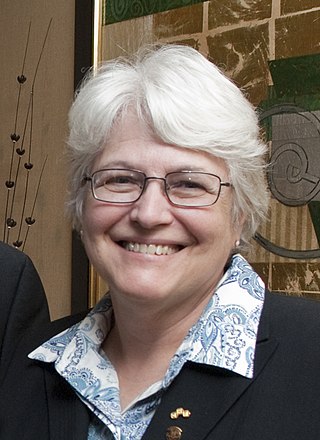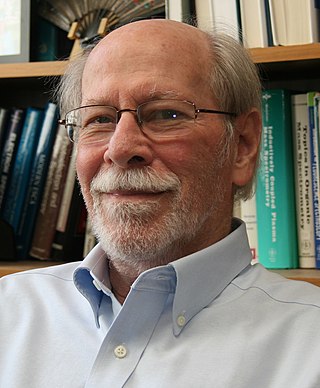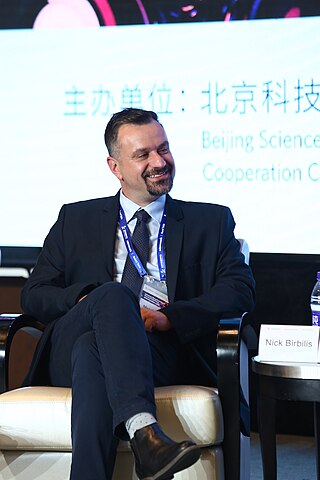Related Research Articles

Norman Hackerman was an American chemist, professor, and academic administrator who served as the 18th President of the University of Texas at Austin (1967–1970) and later as the 4th President of Rice University (1970–1985). He was an internationally known expert in metal corrosion.

A noble metal is ordinarily regarded as a metallic chemical element that is generally resistant to corrosion and is usually found in nature in its raw form. Gold, platinum, and the other platinum group metals are most often so classified. Silver, copper, and mercury are sometimes included as noble metals, but each of these usually occurs in nature combined with sulfur.

Carl Wilhelm Wagner was a German physical chemist. He is best known for his pioneering work on solid-state chemistry, where his work on oxidation rate theory, counter diffusion of ions and defect chemistry led to a better understanding of how reactions take place at the atomic level. His life and achievements were honoured in a Solid State Ionics symposium commemorating his 100th birthday in 2001, where he was described as the father of solid-state chemistry.
Heinz Gerischer was a German chemist who specialized in electrochemistry. He was the thesis advisor of future Nobel laureate Gerhard Ertl.
The Electrochemical Society is a learned society based in the United States that supports scientific inquiry in the field of electrochemistry solid-state science and related technology. The Society membership comprises more than 8,000 scientists and engineers in over 85 countries at all degree levels and in all fields of electrochemistry, solid-state science and related technologies. Additional support is provided by institutional members including corporations and laboratories.

Jean-Michel Savéant was a French chemist who specialized in electrochemistry. He was elected member of the French Academy of Sciences in 2000 and foreign associate of the National Academy of Sciences in 2001. He published in excess of 400 peer-reviewed articles in chemistry literature.
Electrochemical engineering is the branch of chemical engineering dealing with the technological applications of electrochemical phenomena, such as electrosynthesis of chemicals, electrowinning and refining of metals, flow batteries and fuel cells, surface modification by electrodeposition, electrochemical separations and corrosion.
Herbert Henry Uhlig was an American physical chemist who studied corrosion.
Brian Evans Conway, professor emeritus in the Department of Chemistry at the University of Ottawa, was a world-renowned electrochemist, and had a long and distinguished career at the University of Ottawa that spanned five decades.
The Chemical Industry Medal is an annual American award given to an industrial chemist by the Society of Chemical Industry America. The medal has been awarded since 1933, when it replaced the Grasselli Medal. It was initially given to "a person making a valuable application of chemical research to industry. Primary consideration shall be given to applications in the public interest." As of 1945, the criterion became "a person who ... has rendered conspicuous service to applied chemistry." More recently it has been awarded "for contributions toward the growth of the chemical industry."

'Jose H. Zagal Moya is a Chilean scientist educated at the University of Chile with postgraduate training in the United States of America with a Ph.D. degree from Case Western Reserve University, Cleveland Ohio and postdoctoral training at Brookhaven National Laboratory, Upton, New York. At present he is a Distinguished Professor, Department of Chemistry and Materials, Faculty of Chemistry and Biology, Universidad de Santiago de Chile (USACH) where he directs the Laboratory of Electrocatalysis since 1982. He got his Ph.D. in chemistry Case Western Reserve University, US (1978) and was postdoctoral fellow at Brookhaven National Laboratory, Upton, New York, in 1982. His main research efforts are focused on the fundamentals of electron transfer reactions that are relevant for energy conversion and sensors. He has contributed in the area of electrocatalysis, electrodes modified with metal macrocyclics, electrochemistry of biological molecules, the catalysis of the reduction of molecular oxygen and many other reactions of relevance, conductive polymers, electrochemical sensors and in pioneering work in the establishment of non-linear correlations between thermodynamic properties of molecular catalysts and their electrochemical reactivity. These contributions are essential in the development of non-precious metal catalysts for energy conversion devices and electrochemical sensors. [1][2][3] He also has contributed in the field of corrosion, conductive polymers and his well-known volcano correlations for the electrocatalytic properties of surface-confined molecular catalysts

The Edward Goodrich Acheson Award was established by The Electrochemical Society (ECS) in 1928 to honor the memory of Edward Goodrich Acheson, a charter member of ECS. The award is presented every 2 years for "conspicuous contribution to the advancement of the objectives, purposes, and activities of the society (ECS)".

The Gordon E. Moore Medal for Outstanding Achievement in Solid State Science and Technology was established by The Electrochemical Society in 1971 to recognize individuals distinguished for outstanding contributions to solid-state science and technology. The award is presented every two years, and recipients receive a silver medal, wall plaque, cash prize, Society Life membership, and a complimentary meeting registration.

Kathryn Rice Bullock was a chemist, best known for her work in developing valve-regulated lead-acid batteries. Her theoretical and statistical modeling of the electrochemistry of batteries led to better understanding of processes such as corrosion and advances in battery design. Her work has applications for hybrid and electric cars, residential fuel cell systems and solar energy storage. Kathryn Bullock has published over 60 technical papers and holds at least 11 U.S. patents. She served as vice-president of the Electrochemical Society in 1992 and as president from 1995 to 1996. Bullock died on May 17, 2021, from Alzheimer's Disease.

Royce W. Murray was an American chemist and chemistry professor at the University of North Carolina at Chapel Hill. His research interests were focused on electrochemistry, molecular designs, and sensors. He published over 440 peer-reviewed articles in analytical, physical, inorganic, and materials chemistry, and trained 72 Ph.D students, 16 master’s students, and 58 postdoctoral fellows, 45 of whom have gone on to university faculty positions. He was named a fellow of the American Chemical Society in 2012, and was the inventor on three patents related to surface-modified electrodes.
Ulick Richardson Evans was a British chemist who specialised in metal corrosion.
Roger Parsons was a British chemist (electrochemist).

Nick Birbilis is an Australian engineer and academic. He is presently the Executive Dean of the Faculty of Science, Engineering, and Built Environment, at Deakin University. Birbilis was previously the Dean, and Deputy Dean of the College of Engineering and Computer Science at the Australian National University. He is of Greek-Australian background. Birbilis works in the field of materials science and engineering, having made contributions in the area of materials design, materials durability and materials characterisation. He is a Fellow of the Electrochemical Society (US), a Fellow of NACE (US), a fellow of Engineers Australia, a Fellow of the International Society of Electrochemistry, and a Fellow of ASM International (US).
Viola Ingrid Birss is a Professor of Chemistry at the University of Calgary. She works on electrochemistry and the development of nanomaterials for sustainable energy and sensing applications. She has demonstrated a metal oxide perovskite that can be used as the air and fuel electrode in solid oxide fuel cells, as well as creating nanoporous carbon scaffolds to be used in batteries and capacitors.
Morris Cohen was a Canadian chemist working for the National Research Council of Canada in Ottawa. He contributed to the sciences of corrosion and of oxidation of metals.
References
- ↑ Olin Palladium Award
- 1 2 Trumbore, Forrest; Turner, Dennis. The Electrochemical Society 1902-2002: A Centennial History. Pennington, New Jersey: The Electrochemical Society. ISBN 1-56677-326-1.
- ↑ "Society Awards". ECS. 26 August 2018. Retrieved 26 August 2018.
- ↑ "Olin Palladium Award". ECS. 26 August 2018. Retrieved 26 August 2018.
- ↑ "Shimshon Gottesfeld Receives 2019 Olin Palladium Award". ECS. 2019-10-15. Retrieved 2019-12-30.